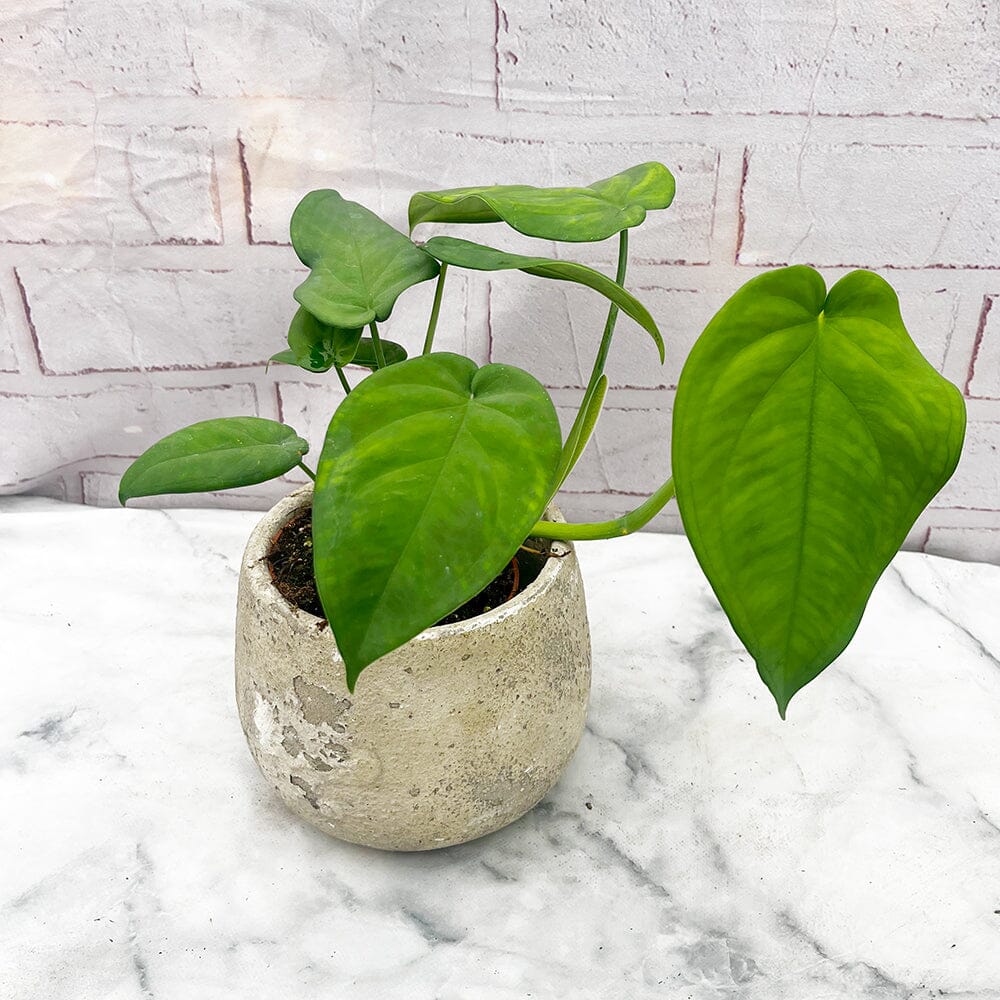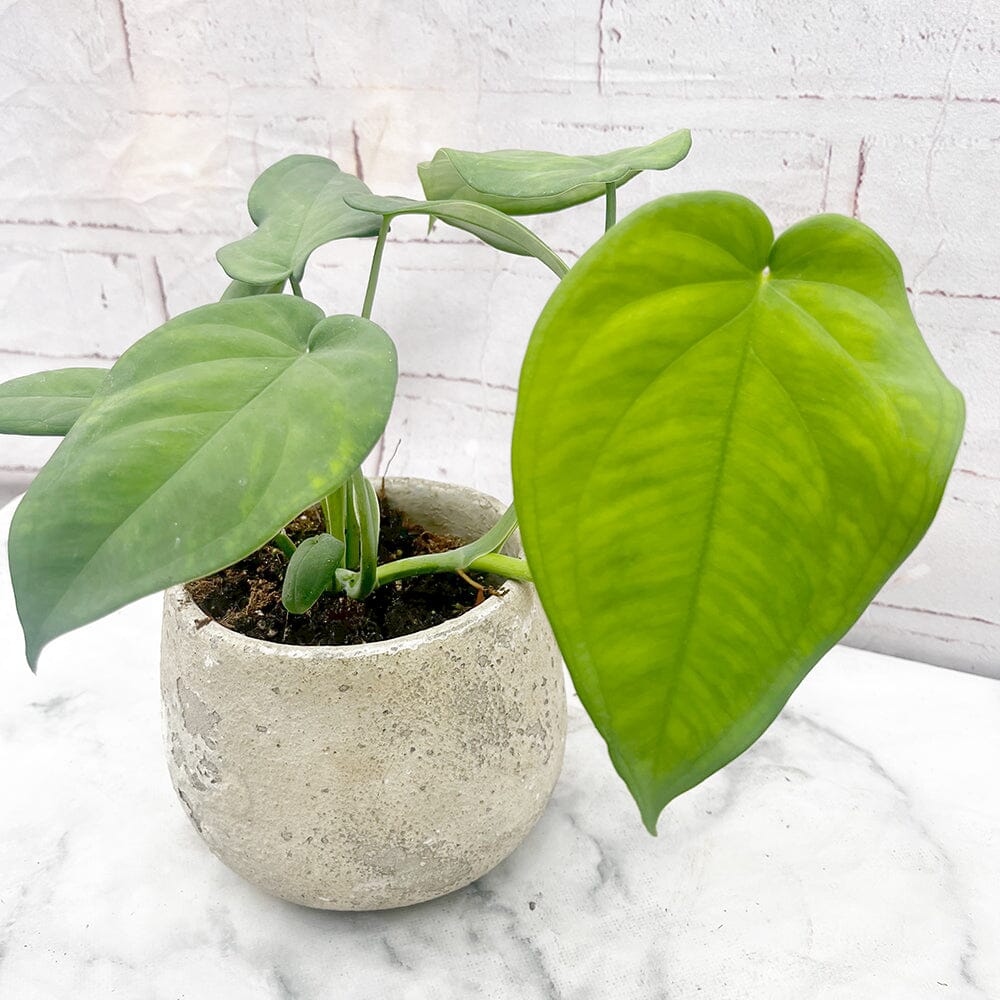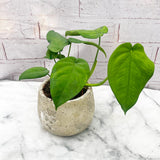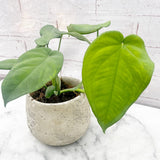New
15 - 25cm Syngonium Chiapense Arrowhead Plant 10cm Pot House Plant
Syngonium Chiapense is a unique species of the Syngonium genus, native to Chiapas, Mexico. Its striking foliage features green, arrowhead-shaped leaves with prominent veining that gives it a highly ornamental appeal. Its mature leaves can sometimes display a beautiful lobed form, making this plant an attractive choice for indoor gardening enthusiasts.
Here is a guide to taking care of your Syngonium Chiapense:
-
Light: Syngonium Chiapense prefers bright, indirect light. Avoid placing it in direct sunlight as it can cause the leaves to burn. It can also tolerate lower light conditions, but its growth may slow.
-
Water: Water your Syngonium Chiapense when the top inch of soil has dried out. These plants do not like to be waterlogged, so make sure the plant is never sitting in water. Overwatering can lead to root rot.
-
Humidity: Being a tropical plant, Syngonium Chiapense enjoys high humidity. Consider placing it in a bathroom or kitchen where humidity tends to be higher. If that's not possible, consider using a humidifier or a pebble tray filled with water.
-
Temperature: It prefers temperatures ranging from 60-75°F (16-24°C). Try to keep it away from drafts or areas with sudden temperature changes.
-
Soil: Syngonium Chiapense thrives in well-draining soil. A mixture of peat moss and perlite can provide good aeration and moisture retention.
-
Fertilizer: During the growing season (spring and summer), feed your plant with a balanced houseplant fertilizer once a month. Follow the instructions on the fertilizer's packaging to avoid over-fertilizing.
-
Propagation: This plant is propagated through stem cuttings. Cut a stem just below a node (where a leaf or branch is or was attached) and place it in water. Once it develops roots, it can be planted in soil.
-
Pruning: Regular pruning can encourage a bushier growth habit. Trim off any yellow or dying leaves to keep the plant healthy and attractive.
-
Pest Control: Monitor your plant for common pests like aphids, mealybugs, and spider mites. In case of an infestation, treat with a gentle insecticidal soap or neem oil.
-
Repotting: Syngonium Chiapense should be repotted every 1-2 years, or when it becomes root-bound. When repotting, it is a good chance to propagate the plant if you'd like.
Remember, the care guidelines may vary based on the specific conditions in your home. Observe your plant and adjust its care as necessary.
Check out our YouTube video to see exactly how we pack for safe delivery.
- Plants are supplied in plastic nursery pots unless stated in the product title.
- Plants are not for consumption unless stated as edible.
- Plant heights can fluctuate +/- 10%.
- Our plants are kept at our tropical nursery in Yorkshire where we maintain an average temperature of 18c.
































